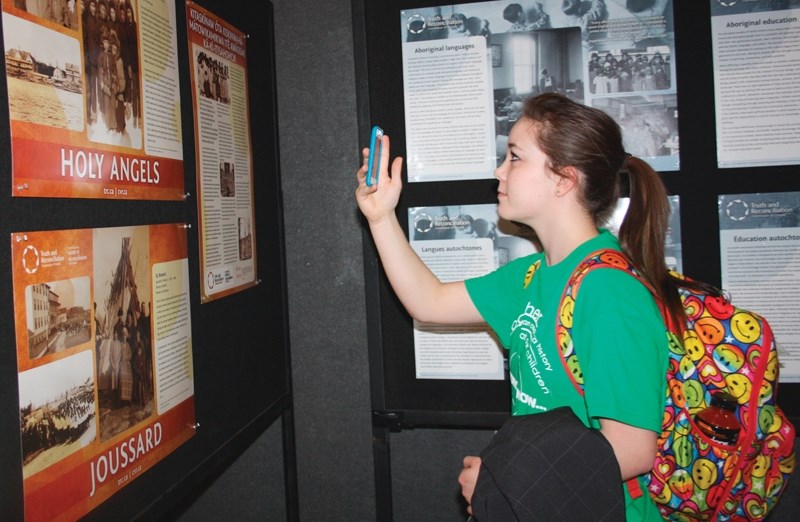For most people, history is read about, not witnessed. But on a day in late March, Olds High School student Allison Land got the chance to see for herself the legacy Canada's Residential School system left on Aboriginal people.“To see that part of Canadian history, learning it in a textbook is one thing but seeing people and hearing of their personal experiences is a totally different spectrum of how it affected these people,” Land said.“It was one of the worst things that Canadians have ever done because we tried to make them white. We tried to take away their culture, we took away their languages, their traditions,” the Grade 10 student added.“So to see or to hear or believe that we were capable of doing that, of taking the next generation of these people and turning them white, it disgusts me really. They should be who they are. That is who they are. You can't change them.”On March 27, Chinook's Edge School Division students attended Education Day, held by the Truth and Reconciliation Commission (TRC), at the Shaw Centre in Edmonton. Two thousand students attended in total.They participated in workshops on breaking stereotypes, healing and heard stories from survivors.Thirty-six Olds High School students and staff went on the trip after an open invitation was extended to the school and some of the local attendees shared their thoughts on what they saw and heard.Keaton Miller, also in Grade 10, recounted listening to an 80-year-old survivor's story.The Métis woman, identified as Mary, spent 10 years in a residential school with two younger siblings, where she endured physical, sexual and emotional abuse.Even now, the memories remain fresh to her, according to Miller.“It was really moving to see how she got emotional about everything,” he said. “She had said she had flashbacks of what was happening while she was talking to us.”Miller added that listening to Mary's testimony was something everyone should experience.But one experience that many have had instead is stereotyping. Workshops examined its effects in the hope people will be judged on character, not skin colour.“They talked about how we need to stop seeing people … as their culture, where their background is, just from first impressions from how they look or how they act,” said Grade 9 student Sage Hughes. “And they say we need to look at people, how they are as people and get to know them before you actually judge them.”Education Day was more than just a lesson in history. It was a chance to create greater understanding of indigenous people by showcasing aspects of diverse Aboriginal culture.One demonstration that stood out to Land was a girl who wore a jingle dress and danced to a drum circle. The practice is meant for healing, she said.Miller added the dress ornaments had the names of people who died in the residential school system written on them.Bev Toews, an educational assistant who helped arrange the trip, said those in attendance also heard throat singing and a lesson on how, contrary to the perceptions of European settlers, who believed indigenous people to be lawless, the concept of law is embedded in Cree culture, songs, stories, regalia and language.Another workshop students attended included Aboriginal artists sharing how art helped them with healing and addiction recovery. It was also a way for them to show what they could offer society, Miller said.The Residential Schools system dated back to the 1870s, with the last school closing in 1996. More than 150,000 Aboriginal children were taken to church-run schools, where they faced abuse and attempts to purge them of their culture.Justice Murray Sinclair, who was present at Education Day, chaired and started the Truth and Reconciliation Commission in 2008 with the mandate to create an accurate historical record of the system and its legacy.That legacy is passed on for generations, said Jana Kemmere, a teacher who attended with the OHS students.She said students were taught how the children of those who lived in the residential schools also bore the brunt of abuses, terming them as “inter-generational survivors.”Children taken from their families lost parents who could never teach them how to be parents in the future, Miller added.Despite the solemn lessons, programming focused on moving past this dark chapter of Canadian history.“They didn't focus on the pain, the suffering that had happened in the residential schools but they focused on reconciliation and what that looked like and how we can move on from the tragedy that happened,” Kemmere said.“I felt convicted as a teacher that I need to spread this history with my students. We as educators and just as Canadian citizens need to be sharing and understanding and just get to know one another.”[email protected]



